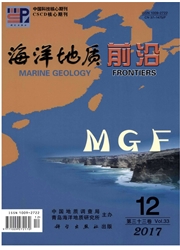

 中文摘要:
中文摘要:
瓯江凹陷自晚白垩世形成以来受多期构造运动的影响,构造应力场不断发生变化,导致其盆地演化及构造特征复杂,形成多种形态的构造样式。通过对全区的新老地震资料处理、解释,总结了研究区内构造样式类型及分布区域,分析了其形成机制。结果表明:研究区内主要发育伸展、挤压及复合3种构造样式。其中伸展构造样式在凹陷西部和东部都有发育,可分为地垒式、地堑式、半地堑式、堑式铲式、多米诺式;挤压构造样式发育于凹陷西南部,主要为断鼻构造;复合型构造样式分为火山岩构造、花状构造、反转构造,主要发育于凹陷中南部地区。
 英文摘要:
英文摘要:
Since late Cretaceous, the Oujiang Sag has suffered from multi-stage tectonic movements and basin evolution with changing tectonic stress field, which leads to the formation of complex struc tural features and various structural styles. Through interpretation of both the new and old seismic data of the whole area, structural styles and their distribution pattern of the area are summarized, and the forming mechanism analyzed in this paper. According to the results, the main structural styles in the study area can be divided into three kinds, namely, extensional, compressive and composite styles. The extensional structures, which are developed in the western and eastern parts of the de- pression, can be further divided into horst-like, graben-like, half-graben-like, shovel-like and Domi- no-like styles, while the compressive structures, which are developed in the southwest of the depres- sion, are mainly fault-nose structures. The complex structural styles are further divided into volcanic rocks, flower-like tectonics and inverted structures, which are main developed in the south-central part of the depression.
 同期刊论文项目
同期刊论文项目
 同项目期刊论文
同项目期刊论文
 期刊信息
期刊信息
